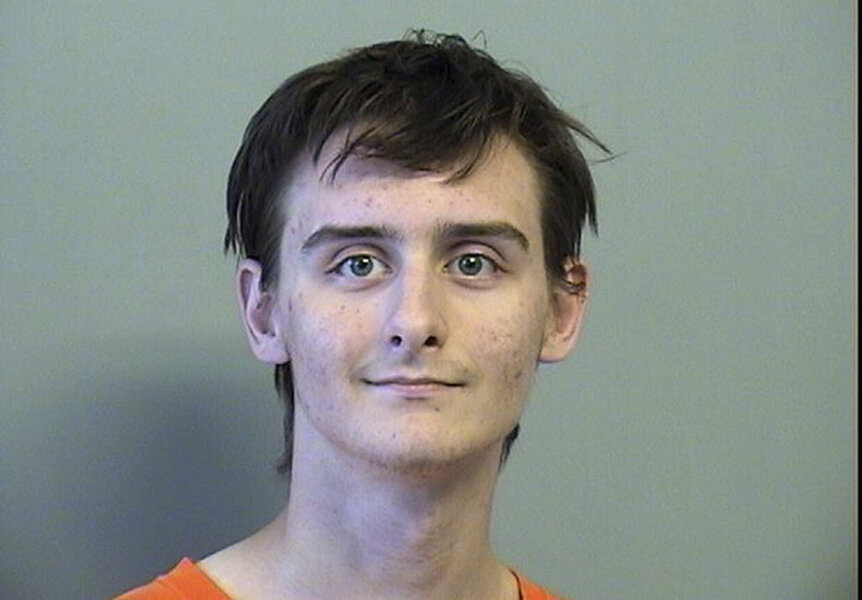Oklahoma stabbing: Why social media is so critical to investigations
Loading...
Have you ever searched for a criminal’s social media trail for a glimpse into their thoughts?
Authorities do it all the time.
On Wednesday, 18-year-old Robert Brever of Broken Arrow Oklahoma allegedly stabbed his parents and three siblings in a late-night attack. Authorities have charged him with five counts of first-degree murder and a count of aggravated assault.
Now, police are searching Mr. Brever’s social media accounts, including Facebook and Pinterest, to find clues about his motives.
His Pinterest account reflects his interest in Star Wars, rock band Linkin Park, and sports cars. According to Facebook, he is a recent graduate of Citizens' High School, a home-schooling program for people hoping to earn a college degree.
Sometimes, killers don't hint at their motives on public platforms. In other recent murder cases, violent tendencies are apparent online.
John Russel Houser, the shooter who killed two people and injured nine at a Louisiana movie theater, left digital clues on the Tea Party Nation website, where he was a member, and in frequent comments on PolitcalForum.com, reports Vocativ.
Mr. Houser praised Hitler and the Westboro Baptist church while expressing paranoia about the fate of the US.
Houser wrote: "It is true that the US is about to fall. I will be in fear at that time as will everyone else, but not in a fear which resembles that of the leaders of foolishness and the brainwashed that follow. Truth carries with it an understanding of death. Rather than live without it, I will take death. My greatest fear is that I could die making a decision for the good of myself against everyone else."
The Lafayette theater shooter isn’t the only one who left clues online.
Dylann Roof, the 21-year-old who has admitted to killing nine people at a Charleston, S.C. church, had a website under his name.
Photos on the site show Mr. Roof posing with weapons, burning an American flag, and visiting Southern historic sites and Confederate soldiers’ graves.
A manifesto called "An Explanation," also published online, read: "I have no choice. I am not in the position to, alone, go into the ghetto and fight. I chose Charleston because it is most historic city in my state, and at one time had the highest ratio of blacks to Whites in the country. We have no skinheads, no real KKK, no one doing anything but talking on the Internet. Well someone has to have the bravery to take it to the real world, and I guess that has to be me."
Muhammad Youssef Abdulazeez, a Kuwaiti-born naturalized American citizen who killed four marines and a sailor at a military facility in Chattanooga, Tenn., had started a blog about Islam on July 13 with just two entries, the first of which described everyday life as a prison.
Following his attack, Sen. Dianne Feinstein told CBS the government needs greater access to digital communications.
"It is now possible for people, if they’re going to talk from Syria to the United States or anywhere else to get on an encrypted app which cannot be decrypted by the government with a court order. And this is extraordinarily dangerous," Feinstein said. As FBI Director James B. Comey explained in a speech last fall, "With sophisticated encryption, there might be no solution, leaving the government at a dead end – all in the name of privacy and network security."
It is unclear if greater access would have revealed Mr. Abdulazeez's intent. CNN reported that in his personal writings, Abdulazeez was critical of US foreign policy and expressed a desire to become a martyr, but one of Abdulazeez’s friends told CNN the shooter referred to Islamic State as a "stupid group" that "was completely against Islam."
However, his life was also complicated by depression, alcohol and drug abuse and an unstable family life, notes Deutsche Welle.
Social media can give more than just insight into a murderer’s mind. It can provide warnings, too.
A Wall Street Journal article last year noted "an Instagram post that suggested Ismaaiyl Brinsley planned to kill police officers as revenge for the deaths of Michael Brown and Eric Garner, came too late to stop the fatal shooting of two New York Police Department officers."
The difficulty for law enforcement is knowing which leads to follow.
"You initially have to judge the validity of the threat, and this is very hard to do," said Tim Burrows, a former officer in the Toronto police force who now consults with police departments on how best to use social media, to the Journal. "A threat in words might look completely different than a threat with those same words but posted with a picture of a gun."
Material from the Associated Press was used in this report.





